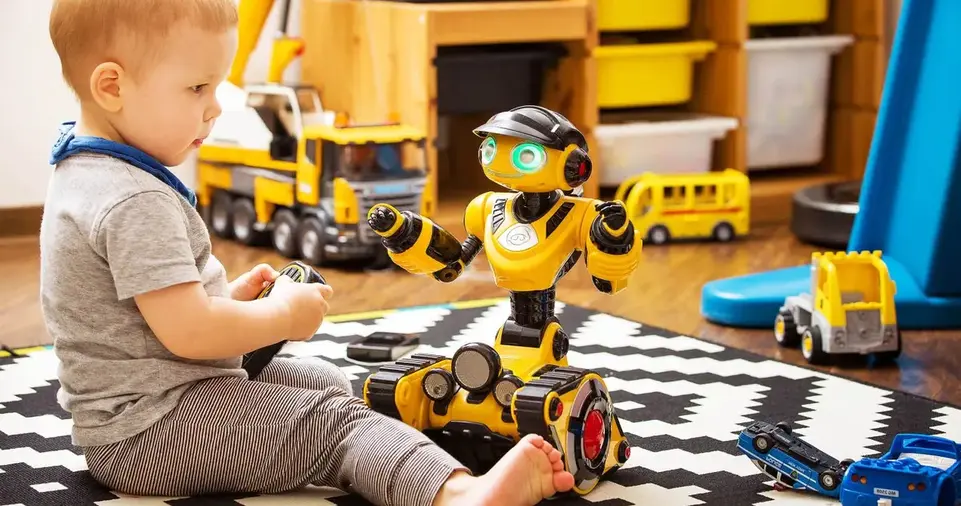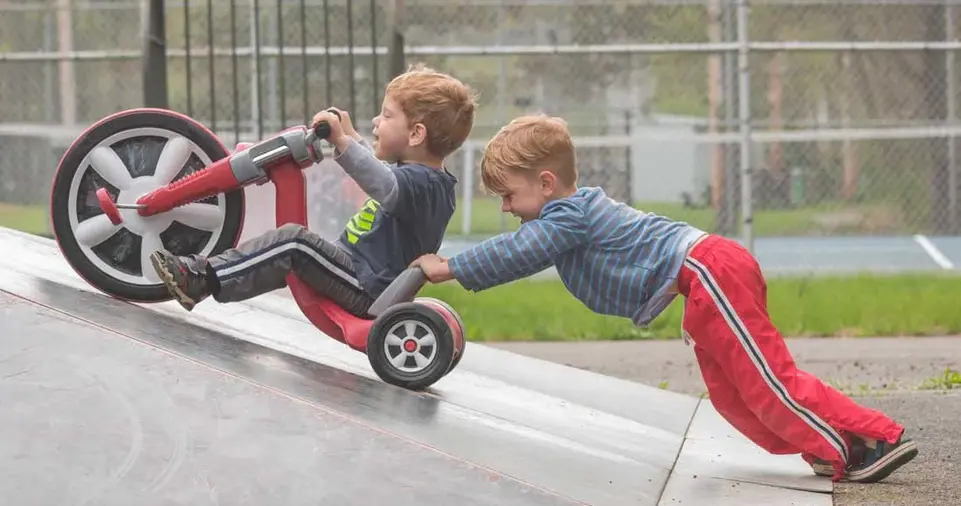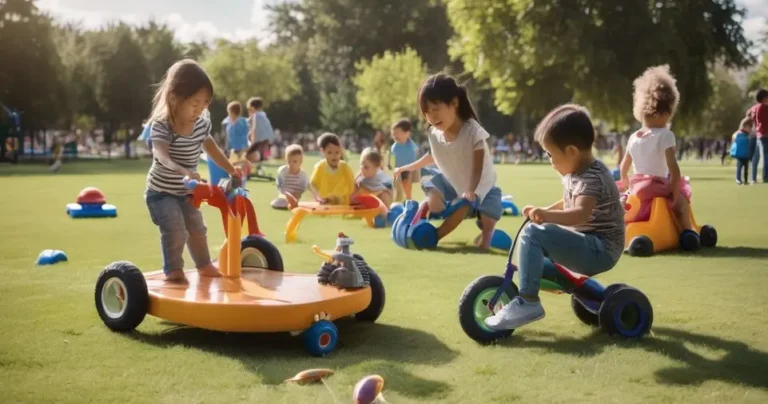Toys are more than just sources of entertainment—they are instrumental tools in shaping a child’s physical, cognitive, and emotional development.
With the increasing prevalence of sedentary lifestyles among children, toys that encourage movement and physical activity are essential.
These toys not only help children stay active but also improve their coordination, strength, and social skills, setting the stage for a healthy and fulfilling life.
This article delves into how toys promote physical fitness and coordination, highlights the benefits of active play, and explores ways parents can maximize the potential of toys in fostering a child’s overall well-being.
The Importance of Physical Activity in Childhood
Physical activity during childhood is vital for laying the foundation of a healthy and active lifestyle.
It goes beyond physical benefits—it also fosters cognitive function, emotional resilience, and social skills.
Physical Activity as a Cornerstone of Growth
When children engage in activities like riding on toys, they are not merely exercising but also stimulating their minds.
Activities that require physical effort promote:
- Muscle Development: Strengthens both large (gross motor) and small (fine motor) muscle groups.
- Cardiovascular Health: Regular movement enhances stamina and builds a healthy heart.
- Bone Strength: Weight-bearing activities support bone density and growth.
Mental and Emotional Benefits
Physical play has a significant impact on mental and emotional well-being:
- Boosts Confidence: Achieving milestones like mastering a ride-on toy fosters self-esteem.
- Encourages Problem-Solving: Activities that require balance or maneuvering stimulate critical thinking.
- Reduces Stress: Physical play acts as an outlet for energy and emotions, promoting relaxation and happiness.
ALSO READ: How to Develop Early Math Skills with Counting and Sorting Toys
How Toys Encourage Physical Fitness and Coordination

Toys designed for physical activity play a significant role in children’s development.
By engaging different parts of the body and brain, they contribute to well-rounded growth.
Ride-On Toys: A Multifaceted Tool for Development
Kids are naturally drawn to ride-on toys, which combine fun, freedom, and exercise.
These toys encourage:
- Freedom and Independence: Children gain a sense of control as they navigate their environment.
- Imaginative Play: Pretending to drive, race, or explore develops creativity and cognitive skills.
- Full-Body Engagement: Riding requires leg movement, steering engages the arms, and maintaining balance activates the core.
Physical Benefits of Ride-On Toys
Riding toys provide a comprehensive workout:
- Gross Motor Skill Development: Strengthens muscles used for running, pedaling, and balancing.
- Balance and Coordination: Adjusting movements on the go sharpens motor skills and spatial awareness.
- Cardiovascular Fitness: Sustained activity promotes a healthy heart and builds endurance.
| Aspect | Impact on Physical Fitness | Example Toys |
|---|---|---|
| Muscle Strength | Builds large and small muscle groups through pushing, pedaling, or steering. | Bikes, tricycles, scooters |
| Balance and Stability | Improves postural control and weight distribution adjustments. | Balance bikes, ride-on cars |
| Hand-Eye Coordination | Synchronizes vision with motor movements, essential for precise actions. | Steering ride-on vehicles |
| Cardiovascular Endurance | Keeps the heart healthy by maintaining an elevated heart rate during play. | Jump ropes, pedal-powered toys |
The Appeal of Active Play Toys for Children
Children are naturally inclined toward toys that allow them to move freely. The intrinsic appeal of these toys lies in their ability to combine play with physical and mental stimulation.
Why Kids Love Ride-On Toys
- Sense of Freedom: The ability to control their movements gives children independence and boosts self-confidence.
- Excitement and Thrill: Speed, movement, and the sensation of exploration make ride-on toys irresistible.
- Imaginative Scenarios: Pretend play scenarios, such as racing or running errands, spark creativity.
Promoting Active Play Through Toys

Active play is essential for holistic development. Unlike structured exercise routines, toys encourage movement in an enjoyable and stress-free way.
Making Playtime an Opportunity for Fitness
- Unstructured Play: Toys like scooters or trampolines encourage self-paced activities, allowing children to explore their physical limits.
- Group Play: Riding or playing with others fosters cooperation, teamwork, and social bonding.
- Outdoor Fun: Encouraging outdoor play exposes children to sunlight and fresh air, which benefit overall health.
Enhancing Social Skills Through Shared Play
Physical play isn’t just about movement—it also builds crucial social skills:
- Communication: Kids learn to express ideas, negotiate roles, and solve problems collaboratively.
- Teamwork: Playing together fosters a sense of camaraderie and mutual support.
- Empathy: Group play teaches children to consider others’ feelings and perspectives.
| Skill | Impact on Development |
|---|---|
| Communication | Encourages verbal and non-verbal interaction during play. |
| Conflict Resolution | Teaches children how to navigate disagreements amicably. |
| Collaboration | Promotes teamwork in group activities like shared obstacle courses or races. |
Toys That Enhance Physical Fitness and Coordination
Categories of Active Toys
| Toy Type | Examples | Benefits |
|---|---|---|
| Ride-On Toys | Bikes, tricycles, scooters | Develops balance, leg strength, and spatial awareness. |
| Sports Equipment | Soccer balls, frisbees, tennis rackets | Improves endurance, coordination, and agility. |
| Climbing Toys | Monkey bars, climbing walls | Builds upper body strength, focus, and problem-solving skills. |
| Outdoor Adventure | Jump ropes, trampolines, pogo sticks | Enhances stamina, rhythm, and overall fitness. |
| Interactive Fitness | Dance mats, active gaming consoles | Combines exercise with technology to make physical activity engaging and fun. |
Addressing Barriers to Active Play
Despite the many benefits of active toys, challenges like limited space, weather constraints, or lack of interest in physical activity can hinder playtime.
Here’s how to overcome them:
| Barrier | Solution |
|---|---|
| Limited Space | Opt for compact or foldable toys like indoor trampolines or foam climbing structures. |
| Weather Constraints | Use indoor-friendly options like dance mats or obstacle courses. |
| Lack of Interest | Involve children in choosing toys they find exciting, and model active play behaviors. |
| Screen Time Dependence | Replace passive screen use with interactive, fitness-oriented video games. |
ALSO READ: How to Enhance Memory and Recall with Interactive Learning Toys
Conclusion
Toys are invaluable tools for promoting physical fitness, coordination, and social skills in children.
Whether it’s riding a bike, bouncing on a trampoline, or engaging in group play, these activities enhance physical health and emotional well-being.
By integrating active toys into daily routines, parents can nurture a love for movement and create lasting memories of fun, exploration, and growth.
With the right toys, every moment of play becomes a step toward a healthier, happier childhood.











